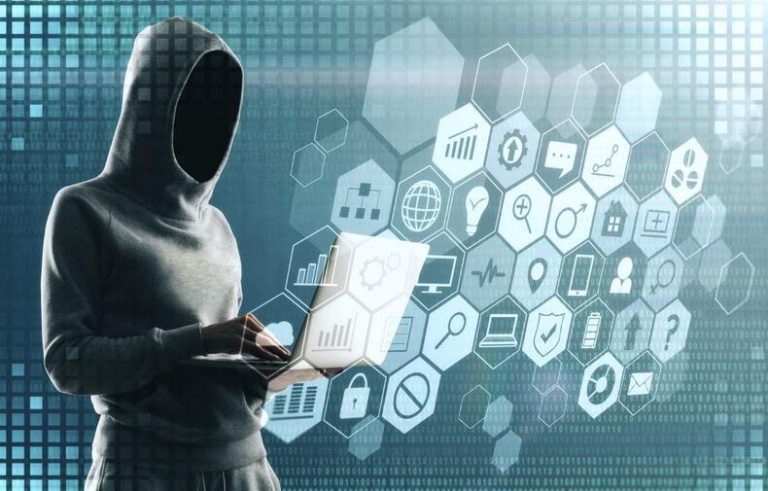The Most Commonly Overlooked Cybersecurity Risks
In the vast world of the internet, where binary code dances like a beautiful show, danger often waits in the shadows for people who aren’t ready for it. Our main character is a seasoned traveler through the digital world, and he has discovered a truth that is rarely acknowledged: the most dangerous hacking risks are seldom in the news.

They are hidden dangers, sneaky attackers, and manipulators who take advantage of our weaknesses to carry out their evil plans. Join our main character as they go on a quest to discover these hidden dangers, revealing threats that people haven’t thought about and giving other Internet users the information they need to protect their digital fortresses.
Weak Passwords: The Achilles’ Heel
Many people don’t realize how much of a security risk it is to use weak passwords. People are often tempted to use easy passwords or use the same password for multiple accounts. The main protagonist can connect to this careless attitude because they, too, have been hurt by the results of it in the past.
Because hackers have access to automated tools, it has become easy to use weak passwords to get into personal accounts and private information without permission. In response to this growing threat, the main protagonist took action by giving each of their accounts strong, unique passwords. Using a mix of uppercase and lowercase letters, numbers, and special characters, they made sure to make strong passwords that were hard to figure out. Also, they now use a reliable password manager to store and handle their passwords to keep them from being forgotten or stolen.
Unsecured Wi-Fi Networks: The Hidden Threat
Even though public Wi-Fi networks are handy, they pose a serious security risk that is often neglected. According to ExpressVPN, when people connect to public Wi-Fi that isn’t safe, they leave themselves open to being spied on, monitored, or given unauthorized access to their devices and private data. When their personal information was stolen from a nearby café’s Wi-Fi network, the protagonists saw how dangerous this threat was.
Now that the protagonist has this earned knowledge, they are very careful when connecting to public Wi-Fi networks to reduce this risk. People take sensible precautions, like not accessing private information or making financial transactions while connected to unsecured networks. Instead, they use a virtual private network (VPN), which encrypts their link to the internet. By doing this, they make sure that their personal information stays safe and can’t be seen by people who don’t have a reason to see it.
Neglecting Software Updates
People often think of software changes as annoying interruptions, so they put them off or just don’t use them. Failure to update software promptly exposes users to cyber dangers.
Updates to software like operating systems, apps, and antivirus programs often include important security patches that fix known flaws. By keeping our devices and apps up to date, you can close security holes that cyber criminals use. Make it a habit to check for and run updates as soon as they come out. This will keep your devices safe from the latest threats.
Phishing: Hook, Line, and Sinker
Phishing attacks are getting smarter and often succeed because we must realize how common and dangerous they are. The protagonist learned this lesson the hard way when they accidentally clicked on a harmful link in an email that gave hackers access to their personal information. According to CNBC, there’s a way to avoid them.
Phishing attacks usually use fake emails, texts, or websites that look like they come from real sources. They try to trick people into giving up private information like login or financial information. You should become more careful to avoid this risk, look over emails and messages carefully, looking for indications of phishing attempts like strange sender addresses or requests for private information. Never click on a link unless you’re sure it’s good. Instead, go to the official website or contact the author through a trusted method to confirm the request.
Social Engineering: Trust with Caution
Social engineering attacks use people’s mindsets instead of flaws in the technology. They involve tricking people and lying to get people to give up private information or let them in without permission. In a social engineering attack, the protagonist got a fake call from someone pretending to be customer service and asking for details about their account. This was a social engineering attack.
To keep yourself safe, you should be careful about what information you give over the phone or online. Before giving private information to people or groups, make sure you know who they are. And also, don’t trust requests you didn’t ask for, no matter how good they seem, and always check with official sources.
Conclusion
Cybersecurity risks are not limited to high-profile attacks; they are also present in everyday activities and are often ignored or underrated. We can strengthen our digital defenses by recognizing and fixing these risks often overlooked: weak passwords, not updating software, falling for phishing, using unsecured Wi-Fi networks, and being open to social engineering. Let’s put cybersecurity first, keep up with new risks, and take preventative steps to protect ourselves and our digital lives in a world where technology is constantly changing.







